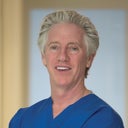after face and necklift one band is very promonent have tried botox several times hasn't helped much my dr discussed cutting the band is this my best option
Answers (16)
From board-certified doctors and trusted medical professionals
Dr. Michael A. Epstein, MD, FACS

Dr. Michael A. Epstein, MD, FACS
Board Certified Plastic Surgeon
Answer
Dr. Vincent N. Zubowicz, MD

Dr. Vincent N. Zubowicz, MD
Board Certified Plastic Surgeon
Answer
Dr. Parker A. Velargo, MD, FACS

Dr. Parker A. Velargo, MD, FACS
Board Certified Facial Plastic Surgeon
Answer
Dr. Thomas Fiala, MD, FACS, FRCSC

Dr. Thomas Fiala, MD, FACS, FRCSC
Board Certified Plastic Surgeon
Answer
Dr. Timothy R. Miller, MD

Dr. Timothy R. Miller, MD
Board Certified Facial Plastic Surgeon
Answer
Dr. Jonathan C. Weinrach, MD, FACS

Dr. Jonathan C. Weinrach, MD, FACS
Board Certified Plastic Surgeon
Answer
Dr. John J. Martin, Jr., MD

Dr. John J. Martin, Jr., MD
Oculoplastic Surgeon, Board Certified in Ophthalmology
Answer
Dr. Arnold Almonte, DO

Dr. Arnold Almonte, DO
Board Certified Plastic Surgeon
Answer
Dr. Stephen Prendiville, MD

Dr. Stephen Prendiville, MD
Board Certified Facial Plastic Surgeon
Answer
Dr. Bryson G. Richards, MD

Dr. Bryson G. Richards, MD
Board Certified Plastic Surgeon
Answer
More Facelift Questions
See all Facelift Q&AWE SEND PRETTY
EMAILS
What’s trending? Who’s turning heads? Which TikTok myths need busting? We’ve got you. No fluff, no gatekeeping—just real talk. Get our free, unfiltered newsletter.